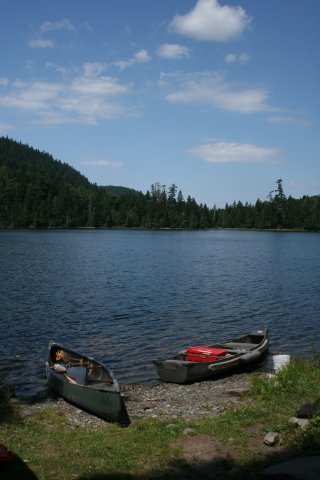National Lakes Assessment 2017 Key Findings
National Lakes Assessment: The Third Collaborative Survey of Lakes in the United States
Key Findings
Healthy lakes enhance our quality of life. They sustain food webs and provide habitat for fish and wildlife. Lakes contribute to a healthy economy, supporting tourism and recreation and supplying drinking water. For the National Lakes Assessment (NLA), EPA, states, tribes, and other partners surveyed a wide array of lakes, from small ponds and prairie potholes to large lakes and human-made reservoirs.
The National Lakes Assessment: The Third Collaborative Survey of Lakes in the United States presents the results of the 2017 survey of lake condition in the conterminous United States. The NLA is part of the National Aquatic Resource Surveys, a series of statistically-based assessments designed to provide the public and decision-makers with nationally consistent and representative information on the condition of the nation’s waters.
The most recent report is the National Lakes Assessment 2022.
CONDITION
Nutrient pollution was the most widespread stressor measured.
- Across the country, 45% of lakes were in poor condition with elevated phosphorus, and 46% were in poor condition with elevated nitrogen.
- Hypereutrophic conditions, typically characterized by excess nutrients, high levels of algae growth, and low transparency, were observed in 24% of lakes.
- Excess nutrients can contribute to algal blooms and low oxygen levels, affecting ecological health, public health, and recreation in lakes.
Poor biological condition was more likely when lakes were in poor condition with respect to nutrients.
- Nationally, in lakes where phosphorus was elevated, benthic macroinvertebrate communities (e.g., insect larvae, snails, and clams living on the lake bottom) were 2.3 times more likely to be in poor condition. In natural lakes (i.e., excluding reservoirs), this risk increased to 6.9.
- Based on benthic macroinvertebrates, EPA found that 24% of lakes were in poor condition and 29% of lakes were in fair condition.
- Based on zooplankton (microscopic animals in the water column), 22% of lakes were in poor condition, and 23% of lakes were in fair condition.
- Chlorophyll a, which indicates the amount of microscopic algae and cyanobacteria present, was in excess and rated poor in 45% of lakes.
Lakeshore disturbance was widespread, yet other physical habitat conditions were rated good in more than half of all lakes.

- Only 25% of lakes were in good condition based on lakeshore disturbance measures, indicating moderate to high levels of human activity and shoreline alterations in 75% of lakes.
- Only 3% of lakes had poor (large) drawdown. The drawdown indicator measures water levels and their fluctuation.
- Most lakes were rated good for shallow water habitat (65%), riparian (lakeshore) vegetation cover (51%), and habitat complexity (55%) conditions.
The algal toxins known as microcystins were detected in 21% of lakes.
- Microcystins measured in the open waters exceeded the EPA recommended recreational water quality criterion in 2% of lakes, or approximately 4,400 lakes across the nation.
- For information on algal toxins in specific lakes, people should check with state, tribal, or local governments before swimming, boating, or fishing.
The herbicide atrazine was detected at low levels in 30% of lakes and was sometimes associated with poor biological condition.
- Atrazine levels exceeded the EPA benchmark, the "concentration equivalent level of concern" for aquatic plant communities, in 0.5% of lakes, representing 1,200 lakes.
- In reservoirs (but not in natural lakes), poor biological condition was almost three times more likely for benthic macroinvertebrates when atrazine was detected.
CHANGE FROM 2012 TO 2017
For both nutrients and biological indicators, there was little change between surveys at the national level, except for chlorophyll a.
- The percentage of lakes in good chlorophyll a condition decreased significantly, from 46% to 34%.
There were significant changes in some chemical and physical habitat measures.
- Lakes with good habitat complexity increased 13 percentage points in 2017.
- Lakes with good ratings for dissolved oxygen decreased by 12 percentage points.
- Detection of microcystins decreased among lakes in 2017 by 16 percentage points.

